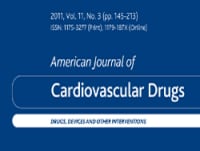Understanding Doxorubicin Cardiotoxicity and EndMT
Khái niệm cốt lõi
Endothelial-to-mesenchymal transition (EndMT) may be a crucial factor in doxorubicin-induced cardiotoxicity.
Tóm tắt
Abstract:
- Chemotherapeutic agents are increasingly used worldwide.
- Doxorubicin is a popular chemotherapy drug but causes severe cardiotoxicity.
- Endothelial damage is a key mechanism in doxorubicin-induced cardiotoxicity.
Introduction:
- Cardiovascular diseases and tumors are leading causes of global mortality.
- Doxorubicin is effective against various cancers but has severe cardiotoxic effects.
- Endothelial-to-mesenchymal transition (EndMT) plays a role in doxorubicin-induced cardiotoxicity.
Endothelial-to-mesenchymal transition (EndMT):
- EndMT converts endothelial cells to mesenchymal cells.
- EndMT is involved in embryonic development and vascular fibrosis.
- EndMT is linked to various diseases like cardiovascular diseases and tumors.
Conclusion:
- Endothelial damage through EndMT is implicated in doxorubicin-induced cardiotoxicity.
Tùy Chỉnh Tóm Tắt
Viết Lại Với AI
Tạo Trích Dẫn
Dịch Nguồn
Sang ngôn ngữ khác
Tạo sơ đồ tư duy
từ nội dung nguồn
Xem Nguồn
www.medscape.com
EndMT: Potential Target of Doxorubicin Cardiotoxicity
Thống kê
Doxorubicin causes severe cardiotoxicity and limits its clinical use.
Dexrazoxane is approved by the US FDA for chemotherapy cardiotoxicity.
Endothelial-to-mesenchymal transition (EndMT) is associated with doxorubicin-induced cardiotoxicity.
Trích dẫn
"Endothelial-to-mesenchymal transition may play a non-negligible role in doxorubicin-induced cardiotoxicity."
"Endothelial damage caused by EndMT has been discovered to be involved in doxorubicin-induced cardiotoxicity."
Thông tin chi tiết chính được chắt lọc từ
by Jie Feng lúc www.medscape.com 05-25-2023
http://www.medscape.com/viewarticle/991838
Yêu cầu sâu hơn
How can the medical community improve the efficacy of cardioprotective agents for doxorubicin-induced cardiotoxicity
To enhance the efficacy of cardioprotective agents for doxorubicin-induced cardiotoxicity, the medical community can focus on several key strategies. Firstly, conducting further research to identify novel molecular targets and signaling pathways involved in doxorubicin-induced cardiotoxicity can lead to the development of more targeted and effective cardioprotective agents. By understanding the specific mechanisms through which doxorubicin causes cardiotoxicity, researchers can tailor cardioprotective agents to counteract these pathways more effectively.
Secondly, exploring combination therapies that involve multiple cardioprotective agents or a combination of pharmacological and non-pharmacological interventions could potentially improve outcomes. By targeting different aspects of doxorubicin-induced cardiotoxicity simultaneously, these combination therapies may provide a more comprehensive and synergistic approach to cardioprotection.
Additionally, personalized medicine approaches that take into account individual patient characteristics, such as genetic predispositions or pre-existing cardiovascular conditions, can help tailor cardioprotective strategies to each patient's specific needs. By considering the unique factors that contribute to an individual's susceptibility to doxorubicin-induced cardiotoxicity, healthcare providers can optimize the selection and dosing of cardioprotective agents for better outcomes.
Furthermore, ongoing monitoring and surveillance of patients undergoing doxorubicin treatment can help identify early signs of cardiotoxicity and allow for prompt intervention with cardioprotective agents. Regular cardiac assessments, such as echocardiograms and biomarker measurements, can help healthcare providers detect cardiotoxicity at its earliest stages and implement cardioprotective strategies before significant cardiac damage occurs.
What are the potential drawbacks of targeting EndMT for the treatment of doxorubicin-induced cardiotoxicity
While targeting EndMT for the treatment of doxorubicin-induced cardiotoxicity shows promise, there are potential drawbacks that need to be considered. One major concern is the potential for off-target effects when modulating the EndMT process. EndMT is a complex biological phenomenon that plays crucial roles in various physiological and pathological processes beyond cardiotoxicity. Targeting EndMT specifically for cardioprotection may inadvertently disrupt other essential functions of EndMT in normal physiological processes, leading to unintended consequences and adverse effects.
Another drawback is the potential for resistance to therapies targeting EndMT. Like many other targeted therapies, there is a risk that cancer cells or cardiac cells may develop resistance mechanisms that render EndMT-targeting treatments less effective over time. This resistance could limit the long-term efficacy of EndMT-targeted therapies for doxorubicin-induced cardiotoxicity and necessitate the development of alternative treatment strategies.
Furthermore, the complexity of the EndMT process and its interactions with other cellular pathways pose challenges for developing targeted therapies. The intricate network of signaling pathways and molecular mechanisms involved in EndMT regulation requires a deep understanding to develop effective and safe therapeutic interventions. Without a comprehensive understanding of these complexities, targeting EndMT for doxorubicin-induced cardiotoxicity may lead to unintended consequences or suboptimal outcomes.
How can understanding EndMT in the context of doxorubicin-induced cardiotoxicity lead to advancements in other medical fields
Understanding EndMT in the context of doxorubicin-induced cardiotoxicity can pave the way for advancements in other medical fields by providing insights into the role of endothelial damage and cellular reprogramming in various diseases. The knowledge gained from studying the molecular mechanisms of EndMT and its association with cardiotoxicity can be applied to other cardiovascular diseases, such as heart failure and atherosclerosis, where endothelial dysfunction plays a critical role.
Moreover, insights into the molecular pathways and signaling cascades involved in EndMT can inform research in oncology and cancer biology. Understanding how EndMT contributes to the progression of doxorubicin-induced cardiotoxicity can shed light on similar processes in tumor development and metastasis. By elucidating the commonalities between EndMT in cardiotoxicity and tumor progression, researchers can identify new therapeutic targets and strategies for combating cancer and improving patient outcomes.
Additionally, the study of EndMT in the context of cardiotoxicity can have implications for regenerative medicine and tissue engineering. By understanding how endothelial cells undergo phenotypic changes during EndMT, researchers can explore ways to harness this cellular plasticity for tissue repair and regeneration. Insights from studying EndMT in cardiotoxicity may inspire novel approaches for tissue engineering and regenerative therapies in various medical fields.
0
